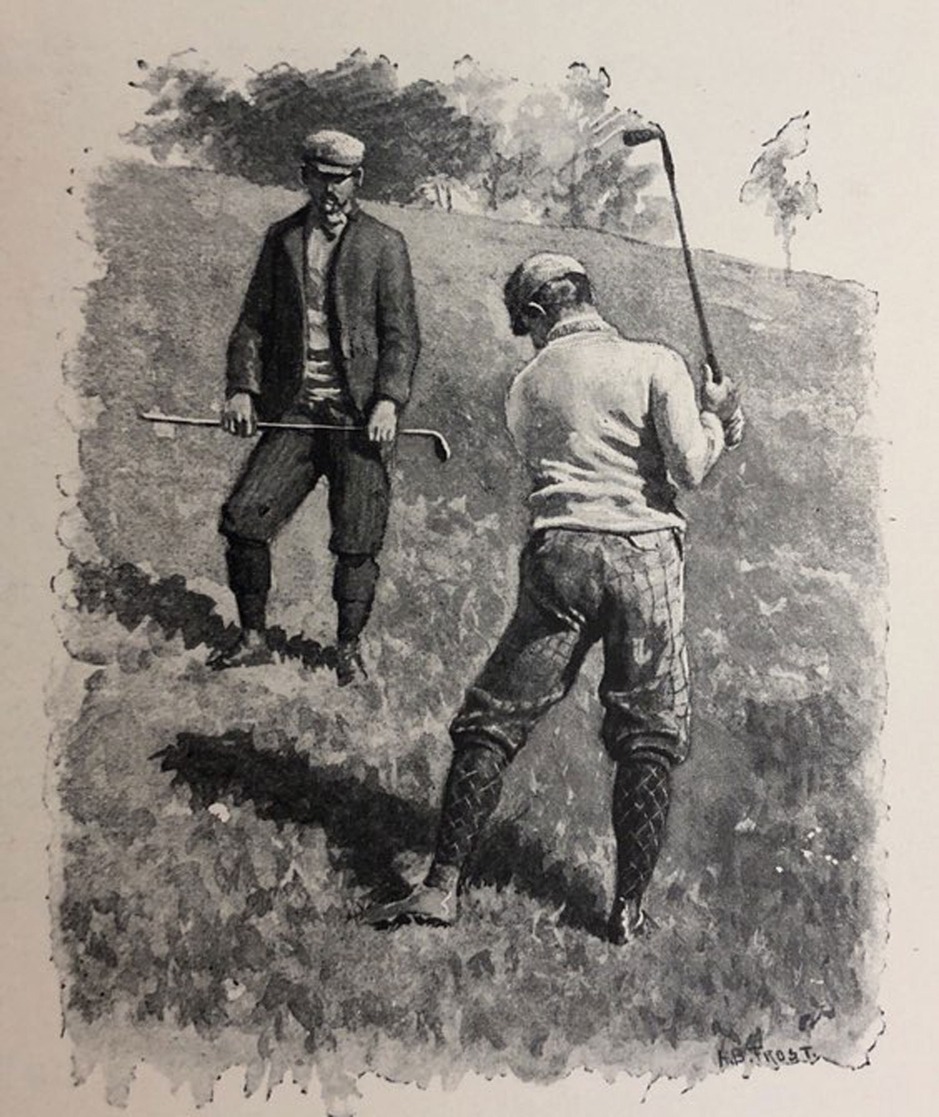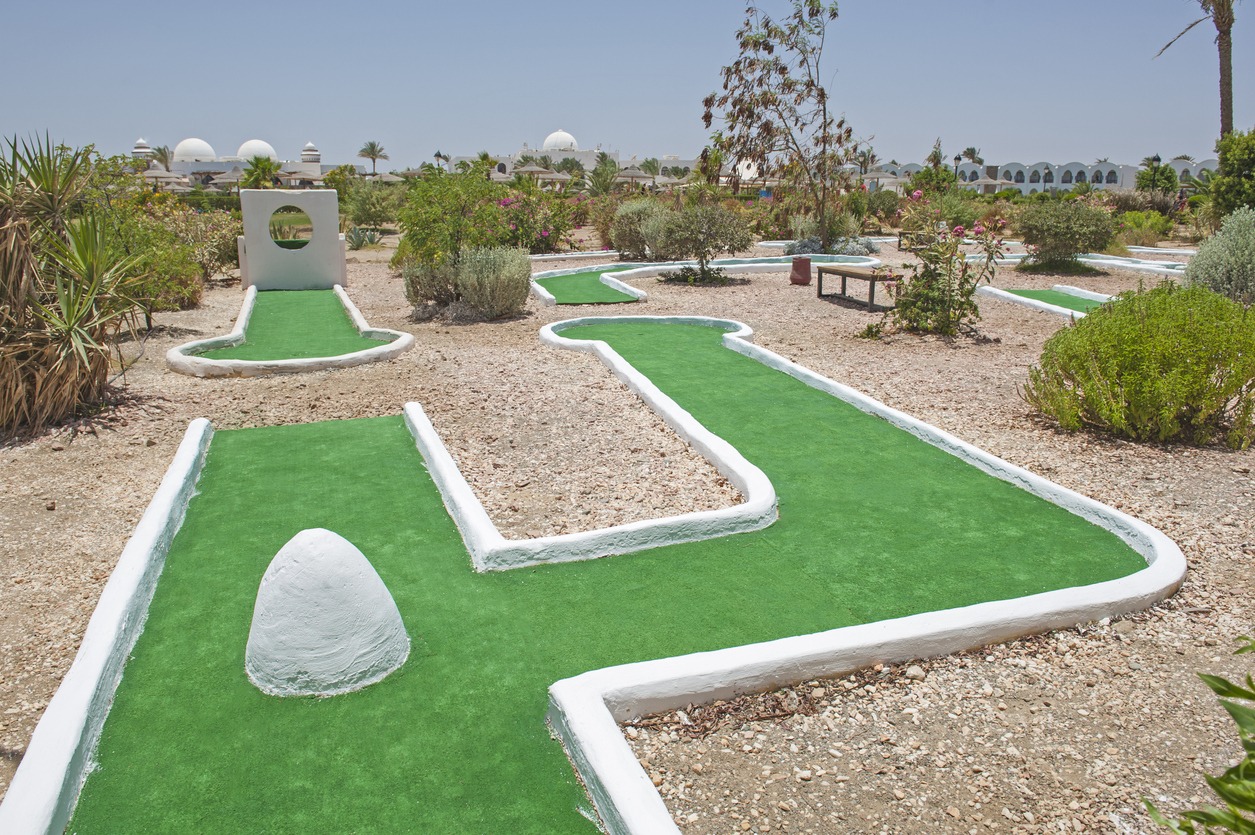Mini golf, also known as putt-putt, crazy golf, or mini putt, is a beloved American pastime that has a rich history. Its origins can be traced back to the early 20th century when the concept of miniature golf courses was first introduced.
Embarking on a fascinating journey through mini golf’s past is like going on a time-traveling adventure. We’ll discover surprising twists, clever ideas, and changes in how people liked to have fun. This adventure begins with simple beginnings, where mini golf was a playful and imaginative way to enjoy leisure time. Over time, it became a beloved activity enjoyed by many.
In this article, we’ll dive into the important moments and events that shaped mini golf’s story. Our exploration will follow a timeline, starting from the lively 1920s and bringing us right up to today’s modern world.
The Ingenious Spark of Mini Golf’s Birth
Let’s travel back to the 1820’s into mini golf’s history, we discover its early beginnings in the green landscapes of Scotland. Way back in 1827, the Ladies Putting Club of St. Andrews laid the groundwork for what would eventually become mini golf. They set the stage for a game that’s all about playfulness and inclusion.
Then in 1910s, something truly remarkable happened that would change the sports world forever. On June 8th, 1912, The Illustrated London News introduced an exciting new concept called the Golfstacle. Imagine a miniature golf course with a cozy carpet-like green and cleverly designed obstacles. These obstacles, shaped like geometric patterns, added an excitement, giving players brand-new challenges and kickstarting the birth of mini golf.
Fast forward just four years to 1916, in Pinehurst, North Carolina, where a game-changing moment occurred. Here, the Thistle Dhu made its grand debut as the very first standardized mini golf course in the United States. The name “Thistle Dhu” might sound quirky, but it cleverly plays on the words “this will do.”
This course took a different approach by using mass production, making mini golf accessible to everyone who wanted a fun golf experience on a smaller scale.
Tracing Mini Golf’s Roots from Scotland to American Skies
The Thistle Dhu marked the start of a fresh era for mini golf, transforming it into a popular and enjoyable choice for people seeking leisure and fun in America. Meanwhile, over in Tennessee, Garnet Carter’s Tom Thumb golf club was adding cool new features to mini golf courses.
A game-changing breakthrough happened when someone got really creative with the materials. They mixed together cottonseed hulls, sand, oil, and dye to create an artificial green. This clever innovation made building mini golf courses cheaper and easier. In fact, it opened the door to creating mini golf courses on the rooftops of buildings in bustling New York City.
The 1900s were a time of incredible innovation and creativity, giving birth to the wonderful world of mini golf that we know and love today.
The Roaring Twenties – Mini Golf Takes Its First Swing
During the 1920s, a period often referred to as the “Roaring Twenties,” the atmosphere was charged with vibrant energy, economic prosperity, and a palpable spirit of defiance. It was during this spirited era that mini golf made its debut as a fun and playful form of entertainment.
Across the United States, little golf courses started popping up, offering a whole new way to enjoy leisure time. One particularly enchanting spot was the Fairy Land Miniature Golf course. Perched high on Georgia’s Lookout Mountain, this course was a true embodiment of the era’s fascination with all things magical and whimsical. The creative minds behind this course, Garnett and Frieda Carter, tapped into the spirit of the times, where people were eager to escape the ordinary and dive into a world of fantasy. With each putt, players were transported into a world where castles, windmills, and other imaginative challenges awaited.
The Mini Golf Phenomenon – Defying the 1930s Downturn
During the 1930s, following World War 1, the world encountered a difficult time known as the Great Depression. This event brought about a shift in the golfing landscape. However, their enthusiasm for the game remained strong.
Regular golf became costly, leading people to seek out more affordable options like mini golf courses. These mini courses got creative, using everyday items found on the streets such as tires, barrels, and old drain pipes as obstacles.
Mini golf skyrocketed in popularity, with around 30,000 courses scattered throughout the United States. These unconventional courses, from city rooftops to vacant lots, symbolized hope and entertainment in uncertain times. Beyond a simple pastime, mini golf evolved into a cultural sensation, uniting people from diverse backgrounds and age groups.
Putting a Spin on Mini Golf: Innovations in the 1950s
The 1950s brought exciting changes to the world of mini golf. In 1954, the Putt-Putt corporation was established in North Carolina, quickly becoming a leading name in golf clubs. Interestingly, the term “putt-putt golf” became synonymous with mini-golf, even though there’s a subtle distinction between the two.
Meanwhile, in 1953, a creative mind named Don Clayton took mini golf to new heights. He introduced a captivating twist by crafting short holes that challenged skilled players to score holes-in-one. How did he do it? By adding banking metal rails that allowed precise rebounds, fostering unique and skillful play.
Don’s innovative concept gained traction, capturing the attention of players worldwide. Soon, other organizations followed suit, enhancing the design with mechanical marvels. These new features included rotating ramps, animated hazards, flashing lights, and even windmills. The mini golf landscape was transformed, offering players an array of imaginative and challenging obstacles to conquer.
Modern Mini Golf – A Cultural Icon
As the 20th century moved forward, mini golf kept changing. Some courses stuck to their original charm, while others embraced new ideas and ways of designing. Mini golf became a big part of places where families go for fun, offering more than just putting greens. In Scandinavia, where the nights are long and the days are short, they came up with glow-in-the-dark mini golf. It was a clever idea that made playing golf even more fun, especially when it’s dark outside.
Today, mini golf is a part of our culture, something many people remember and enjoy as a special and family-friendly activity.
The Enduring Allure – Mini Golf in the Digital Age
In the 21st century, mini golf is still just as exciting. Even though we have lots of digital entertainment, the hands-on and interactive nature of mini golf keeps captivating people of all ages. Mini golf courses have changed to fit the times, using technology and creative designs to make the game even more interesting. Today, September 21st is Worldwide Miniature Golf Day, and ‘National Mini Golf Day’ is observed on the second Saturday of May every year!
Conclusion
The history of mini golf is a testament to the power of creativity, innovation, and the human spirit to find joy even in the face of adversity. From its humble origins on a mountaintop to its modern incarnations in bustling urban centers, mini golf has left an indelible mark on American culture. Its enduring popularity is a reminder that, sometimes, the simplest forms of entertainment can bring people together, create cherished memories, and leave an unforgettable legacy. As we celebrate the history of mini golf, we also celebrate the spirit of imagination and play that continues to enchant us to this day.



